With 4.57 billion active internet users as of July 2020 and around half of the current American workforce working remotely, the opportunity to start an online business couldn’t be bigger. Plus, there’s a plethora of marketing, sales, and research tools to help you grow your business faster than ever.
But there’s a problem.
Up to 90% of startups fail. Only a select few new companies enjoy long-term success.
However, by using the minimum viable product approach, you can prosper. You maximise the chances of your product’s success. By validating and learning about your target customers with the least amount of effort, you create a product roadmap and avoid problems from the start.
This post will define the minimum viable product concept, reveal its strategies, and give examples of companies that use it.
Let’s begin.
What is a minimum viable product?
A minimum viable product (MVP) is a launch version of a product with an elementary set of features to gain customers with the least effort while learning about their needs.
These original customers provide feedback that helps fine-tune the product into a fully-fledged product later through a series of iterations.
Eric Ries, author of The Lean Startup popularised the term. His minimum viable product definition emphasises the maximum amount of validated learning about customers with the minimum effort.
5 Reasons to start with a minimum viable product
Now that you understand what an MVP is, let’s explore its advantages. Starting with a minimum viable product is beneficial in five ways.
1. Less expensive
Building products from scratch is expensive. Securing venture capital funds as a startup is a herculean effort. Whether you want to woo angel investors or hustle on crowdfunding platforms, it’s tough. It can take up to 2 years to raise venture capital.
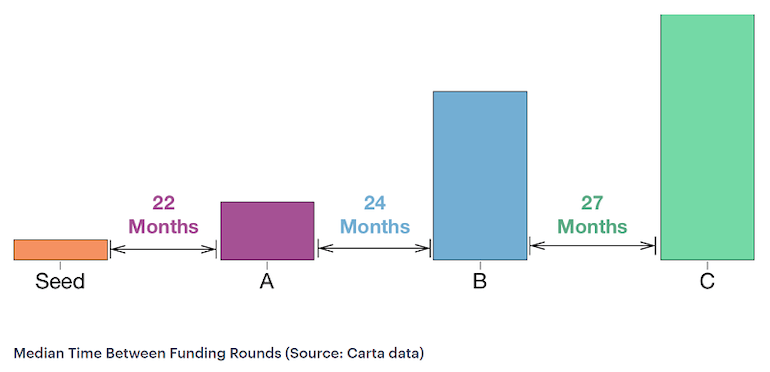
Source: Carta
Many budding entrepreneurs’ dreams have been stillborn because they couldn’t get startup funding. Thankfully, creating an MVP product is cheap.
Why?
It allows early-stage companies to launch an economical basic product quickly. Putting together core features doesn’t require a steep financial investment like making a full-blown product.
2. Less risky
Releasing a new product is risky. You are not sure if people will love it. Does this scenario sound familiar?
A thrilled product team creates a fancy product. They believe it’ll dominate the market. However, upon release, the product fails despite all the bells and whistles. Precious financial resources go down the drain.
But an MVP protects you from this.
You validate the product’s potential through customer feedback. You launch with minimum risk because you know you’ve made what people want.
#3. Quick release
Going through the whole product development process is long, arduous. Depending on who you ask, there are up to eight stages you must go through.
A minimum viable product shortens the time between conception and the moment you release your product to the market. The lean startup process is agile. It empowers teams to move fast and avail the product for sale before interest wanes or a competitor fills up the gap.
#4. Validation
Marketing and sales teams often crack their heads about their tactics because they cannot sell a particular product.
Reason?
People don’t like it. According to a Harvard Business School professor, a staggering 95% of new products fail. Let that sink in.
Using the MVP process solves this problem. Through direct user feedback, the product development team can tell if people like the product or not. You can test your concept using Qualtrics.
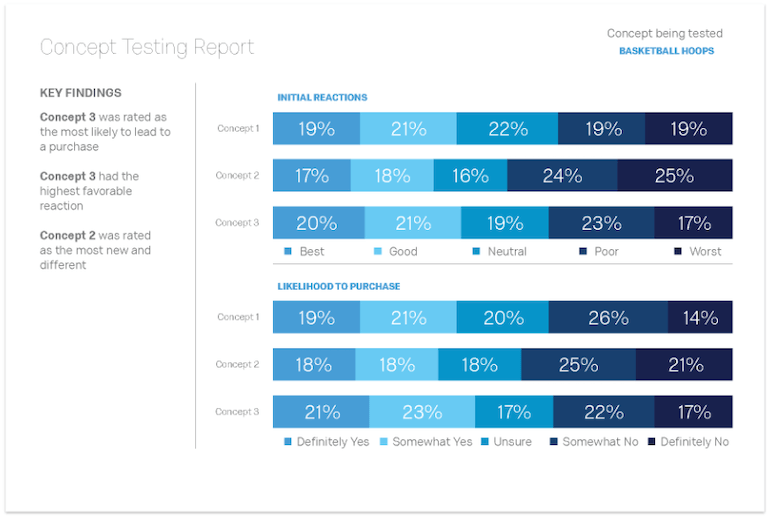
An MVP helps the product team receive user feedback quickly. You determine product-market fit fast and efficiently. Thereafter, you can launch with confidence because you have validated your product.
#5. Sharper marketing messages
The MVP tactic gives teams a vast, fresh, and unfiltered pool of knowledge gleaned from customer responses. The sales and marketing teams can use it to produce laser-sharp marketing messages.
- Pinpoint value propositions.
- Clear, detailed buyer personas.
- Relevant copy for campaigns.
- Captivating product descriptions.
- Persuasive sales decks.
4 Characteristics of a minimum viable product
So, what are the typical elements of an MVP? Let’s dig into four of them.
1. Basic, but useful
It’s easy to think of an MVP as a rudimentary, rushed, and barely useful product.
Not so.
Yes, it has a minimum feature set. But it provides value by solving a serious nagging problem.
Customers will pay for it even if it’s incomplete and imperfect because it’s useful.
2. Feedback and iteration
In the lean startup business model, user feedback is a crucial piece of the puzzle. From the onset, early adopters agree to provide the product team with as much feedback as possible. The product team uses this info to improve the product and release it for another trial run. With each round of feedback and iteration, the product becomes better and better.
3. Soft launch
Unlike a full launch with all the pomp and fanfare, you introduce an MVP quietly. The launch has a few elements.
- A restricted audience: companies handpick the initial buyers following predetermined criteria. They also cap numbers to garner focused feedback and streamline the product development process.
- A limited budget: product launches can be pricey. MVP launches cut back costs so the company doesn’t waste resources if the market decides it doesn’t want the product. Also, a limited budget means fledgling businesses can create and try products even if they don’t have full funding.
- A landing page: for people to buy a product, they must see an offer first. With an MVP product, you make that offer on a custom landing page. In case you are uninitiated, a landing page is a standalone distraction-free web page that maximises conversions.
4. Affordable, attractive pricing
Because MVP products are unproven, their prices are:
- Discounted
To lure potential customers, marketing teams slash the initial price. As a result, the price is favourable to buyers. Trying the new product becomes a simple decision. - Grandfathered
Naturally, the more features and specs a product has, the more people must pay for it. Not rocket science, right? A key pricing feature of MVPs is that companies lock users into the cheap initial price forever. They enjoy additional features without paying an extra penny. - Staggered
To attract as many customers as possible MVP payment terms are flexible. Can’t pay the full price upfront? No problem. You can always pay in convenient pocket-friendly monthly instalments. Flexible payment terms are appealing to customers, so they take up the offer in droves. This is superb news for the product development team. They have more funds at their disposal to refine the product.
Learn more about product pricing strategies here.
How to build a decent MVP in 5 simple steps
You’ve seen the benefits of a minimum viable product. Let’s move on to how to build it. Here are five steps to follow.
1. Build an audience
It all starts with building a minimum viable audience (MVA) around subjects they care deeply about. One of the best ways to build an audience is to start and scale a blog. Don’t have an audience? Drive paid or organic traffic to a landing page to sell your idea or build a list fast.
2. Listen to what they want
As you engage with your audience, listen. Determine what they need. Learn their struggles, pains, and aspirations. Don’t wait for them to tell you explicitly otherwise, you will wait forever.
3. Test your ideas
See if people love your idea. Ask a small segment of your audience if they’d buy the product you intend to build. Do a simple survey and ask them what their biggest challenges are or to choose a product idea they like from several suggestions.
Access our PhD-designed product concept survey template by signing up for a free account
4. Build a basic product
Once you’ve pinpointed your audience’s needs and picked a concept with potential, make a product with core features. Promptly release it to your audience despite its imperfections. It doesn’t have to be epic from the beginning.
5. Use audience feedback to perfect the product
Make fine adjustments to the product or service until it’s fully developed.
How (and when) to move beyond the MVP
Remember, the MVP is not a complete product. Its sole purpose is to confirm or disprove the viability of a business idea. If your idea is workable, move on. The sooner you move from ideation and creation to marketing and scaling the better because you gain traction sooner.
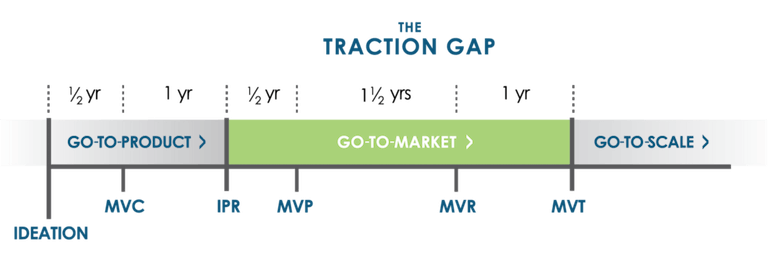
Source: CEO Quest
Here’s how.
1. Add all the needed features
Follow the guidance of your audience meticulously. Add all the features they long for and then some. Turn the MVP into a remarkable, well-rounded product with an impressive array of features.
2. Costing and pricing
At the MVP stage, the goal isn’t to make a profit. The aim is to get feedback about the feasibility of your idea from customers. Once your MVP passes the test, work on costing and pricing. Set the right price point that’ll turn it into a profitable money-maker.
3. User experience
Using your product must be pleasurable, not vexing. Make it intuitive and easy to use even for non-techies if it’s a SaaS product. Invest in exceptional product design. Customers will reward you with their loyalty.
4. Emotional appeal
Having a product with stellar features isn’t enough. For users to adore it, it must titillate their emotions. Add delicate touches so your product sparkles. Turn heads with emotion-triggering nice-to-haves.
5. Unique selling proposition
To stand out and attract customers, distinguish your product from competitors. How? Point out its special attributes no competitor has. Then it’ll be easy to position and market it. People will see it’s worth straightaway.
6. Scaling
Focus on the 3 Ss to scale your product: systems, support, and sales. Build sound internal systems. Next, work on a support team so users find help promptly whenever they need it. Finally, polish up your marketing and sales plan so you rack in dollars. Be sure to choose only those marketing channels which drives traffic and generates the most sales for others:
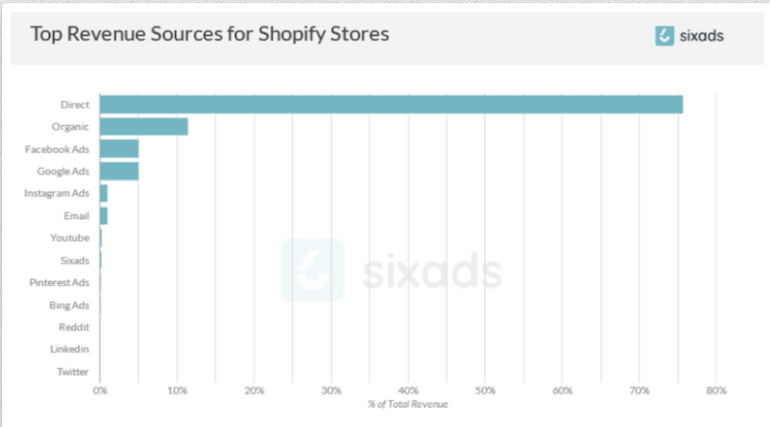
But how do you know it’s time to upgrade? Easy. When bugs and complaints get fewer and fewer. When compliments far outweigh complaints, it’s time to go beyond the MVP.
3 Examples of blossoming companies that started with MVPs
Perhaps you are wondering: Yes, the MVP business framework sounds good, but does it work?
Here are three case studies of thriving companies built on the minimum viable product model.
1. Copyblogger
Ever heard of a guy named Brian Clark? He is the founder of Copyblogger, an 8-figure a year software and education business. They create and sell online courses, like “Teaching Sells”, as well as software, like their “Rainmaker Platform.”
He:
- Built an audience.
- Identified their needs, pain points, and dreams.
- Made a core product to meet those needs.
- Improved the product using audience feedback.
- Sold the final product at a premium price.
Brian doesn’t think the reason for their success is that they’re smarter than everyone out there. During an interview, Brian remarked, “The only smart thing about us is that we listen.”
2. Zappos
Before online shopping became mainstream, entrepreneur Nick Swinmurn had a revolutionary idea.
At the time, if you wanted to buy shoes you had to:
- Physically go to shops to check for shoes.
- Try the pairs of shoes that appealed to you.
- Buy the one you liked and trek back home.
Nick pondered, “Can’t people buy shoes online without leaving their homes or trying them in-store?” He tested his hunch.
He took photos of shoes from shops nearby and marketed them online. Once customers ordered shoes, he’d ship them. That’s how eCommerce giant Zappos grew into a multi-billion dollar business.
3. Dropbox
Every money-making business starts as an idea in someone’s mind.
Dropbox founder Drew Houston knew the time and financial investment needed to build a prototype of his proposed solution to saving and sharing files would be exorbitant.
His answer?
Making a simple joke-filled video sharing how the proposed product would work. He targeted technology enthusiasts to gauge interest for the product.
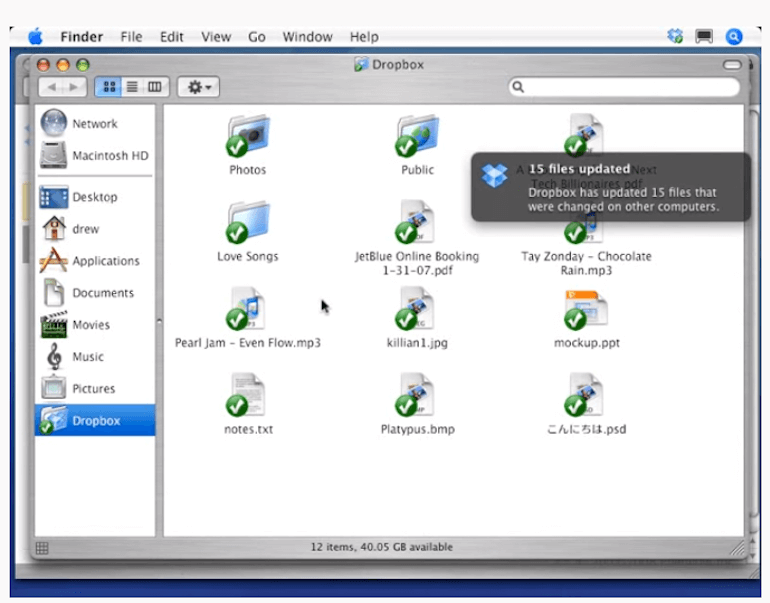
Source: YouTube
The video exploded:
- Thousands of prospects visited their website.
- Their waiting list ballooned to 75k people overnight.
Drew knew he had struck gold. Today, Dropbox is a $10 billion brand, thanks to a 4-minute demo video.
Minimum viable product (MVP): Solid base for launching a successful product
An MVP is a sturdy product launchpad. You can use it to:
- Test the value of your product idea.
- Learn more about your customers’ needs.
- Improve the quality of future products.
Use it wisely and you can launch a thriving product
eBook: Introduction to Product Concept Testing
This post was written by Adam Enfroy

With over 500,000 monthly readers, Adam Enfroy’s mission is to teach the next generation of online entrepreneurs how to scale their influence at startup speed.